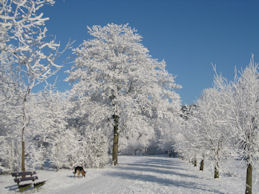
It’s easy to tell fundraisers to look at their donors first, but are there times when it makes sense to look outside the donor pool? If so, when and how should you do it?
This may sound obvious, but usually the best time to go after cold prospects is after you have looked in your donor pool and need more. Apart from general donor acquisition, this might happen for a few reasons including:
(1) You need more major gifts than your current donor pool can support
(2) You need qualified prospects to fill board member positions
(3) You are strategically reaching out to a new constituency
Branching Out
When you are looking for more major gifts or new board members, a great technique is Branching. This technique is described in Prospect Research for Fundraisers: The Essential Handbook (p.26) and you might also hear it described as Relationship Mapping (p.175). The idea is that you take your high-powered, well-connected donors and trustees and put them at the center, branching their connections outward.
A simple, but great example, of this technique is demonstrated by Dan Blakemore in his blog post, “How One Web Search Led to a $20,000 Gift”. When the board chairman passed away and he needed to find donors for a named fund in his memory, Dan branched out from the board chairman’s connections to identify a donor who made a first gift of $20,000. Dan started with his existing donors, but he took an extra step outward and was successful. You don’t have to start with a huge project to get results.
Strategic New Direction
Branching exercises sometimes result in more of the same prospects because you are working within a network of connections. There are organizations that do not want more of the same. They make a deliberate decision to reach out to new and different constituencies. This might take the form of populating the board of directors with people who are more similar to the people they serve. It might also be a concerted effort to engage an entirely new group with the organization in a meaningful way.
In the book, Prospect Research for Fundraisers, we tell the story of Jeff Lee at Wycliffe Bible Translators (p.164). He was hired to build stronger fundraising efforts in Asian countries where Wycliffe operates, but also to build engagement with the U.S. Asian-American community, hopefully at some point in the future linking that engagement back to the home countries. Some institutes of higher education and other organizations are strategically building engagement with countries where new wealth is emerging, such as China and India. When you are starting out new there are usually few existing donors and relationships, so how do you go about it?
Building Up and In
In the U.S. there are many sources of information specific to industries, ethnic communities and more. For example, local Business Journals usually publish a “Book of Lists” each year. You can build a list of the top philanthropists in your community, the top business leaders and more. You can ask a researcher to build you a specific list, or as a frontline fundraiser you might start by, for example, joining a local association of Chinese business owners and using a researcher to help you get more information after you have identified specific individuals.
First you build up your list of cold prospects (some people call them targets, but that often sounds harsh to a fundraiser’s friendly ears) and then you make the inside, face to face connections, getting prospect profiles on individuals once you have made a connection.
Cold Prospecting Takes Effort
No matter how you go about it, cold prospecting consumes a lot of time and resources. Make sure you set yourself up for success. Following are some tips:
Plan & Track:
Make sure you have a plan in place. You wouldn’t just show up on a plot of land and build a house willy-nilly. Draw up a plan and track your progress periodically.
Polish Skills:
You may find it takes a different set of skills to engage a new group of people. Be sure to get any training you need. Network with colleagues who have done similar work successfully.
Educate Yourself:
You may need to broaden your knowledge of the culture and history, inside or outside of the U.S. Researchers can help you gather this information as well.
There are good reasons to do cold prospecting, but it needs to be treated with careful respect because of its expense. Just as you nurture donors acquired through direct mail to ensure you raise much more money in the long-term than the initial cost of acquisition, likewise you need to plan your major gift prospecting projects to ensure that they lead to large gifts and deep relationships.
About the Author
Jen Filla is president of Aspire Research Group LLC where she works with organizations worried about finding their next big donor, concerned about what size gift to ask for, or frustrated that they aren’t meeting their major gift goals. She is also co-author of Prospect Research for Fundraisers: The Essential Handbook.